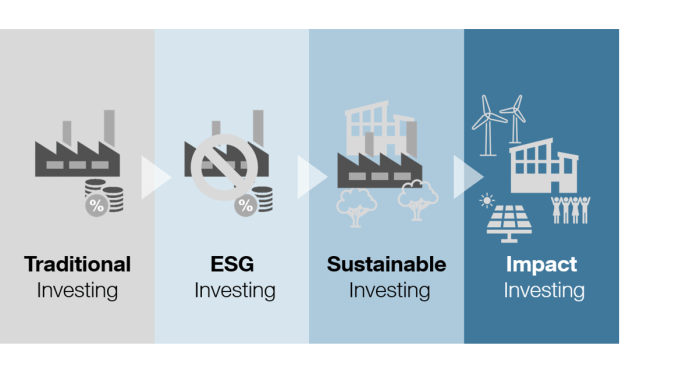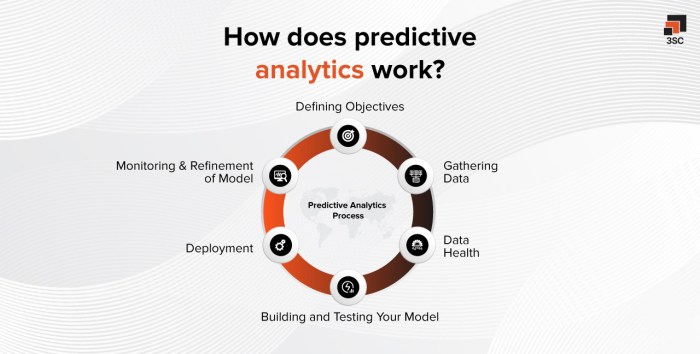How Sustainable Finance Principles Are Changing Traditional Accounting Models is reshaping the financial landscape. The increasing global focus on environmental, social, and governance (ESG) factors is forcing a reassessment of traditional accounting practices, which historically prioritized solely financial metrics. This shift necessitates a deeper dive into how companies measure and report their impact beyond profits, incorporating environmental footprints and social responsibility into their core financial narratives. This exploration will delve into the evolving standards, challenges, and opportunities presented by this transformative change.
The integration of ESG factors into financial reporting is no longer a niche concern but a mainstream imperative. Driven by investor demand, regulatory pressures, and a growing societal awareness of sustainability, companies are increasingly adopting new frameworks and metrics to reflect their holistic impact. This evolution requires a fundamental rethinking of financial analysis and decision-making, prompting the development of innovative accounting methodologies and technologies to meet the demands of a more transparent and responsible financial ecosystem.
The Rise of Sustainable Finance and its Impact

Sustainable finance, encompassing investments and financial practices that consider environmental, social, and governance (ESG) factors, is rapidly gaining prominence in the global economy. This shift reflects a growing awareness of the interconnectedness between financial performance and long-term sustainability, moving beyond traditional profit-maximization models. The integration of ESG considerations is no longer a niche pursuit but a mainstream imperative, driven by a confluence of factors impacting businesses and investors alike.
The increasing importance of sustainable finance stems from several key drivers. Firstly, there’s a rising demand from investors, particularly younger generations, who are increasingly aligning their investments with their values. These individuals are actively seeking opportunities to generate financial returns while contributing to positive social and environmental outcomes. Secondly, regulatory pressure is mounting globally, with governments implementing policies and regulations that incentivize sustainable investing and discourage environmentally damaging practices. This includes carbon pricing mechanisms, stricter environmental reporting requirements, and tax incentives for green initiatives. Thirdly, growing awareness of climate change and its potential economic impacts is prompting businesses and investors to proactively manage environmental risks and opportunities. The physical risks associated with climate change, such as extreme weather events, and the transition risks associated with the shift to a low-carbon economy are becoming increasingly difficult to ignore. Finally, reputational risks are compelling companies to adopt more sustainable practices. Consumers and stakeholders are increasingly scrutinizing corporate behavior, and companies with poor ESG performance face potential boycotts, reduced brand value, and difficulty attracting and retaining talent.
Sustainable Finance’s Influence on Corporate Behavior, How Sustainable Finance Principles Are Changing Traditional Accounting Models
The integration of sustainable finance principles is significantly altering corporate behavior. Companies are increasingly incorporating ESG factors into their strategic decision-making processes, leading to tangible changes in their operations and reporting. For example, many companies are setting ambitious targets to reduce their carbon emissions, invest in renewable energy sources, and improve their supply chain sustainability. This often involves implementing new technologies, improving energy efficiency, and adopting more responsible sourcing practices. Furthermore, the increased scrutiny of ESG performance is driving greater transparency and accountability. Companies are investing in more robust ESG reporting frameworks, providing stakeholders with more detailed information about their environmental and social impacts. This enhanced transparency is facilitating better decision-making by investors and enabling them to identify and reward companies with strong ESG performance. For instance, the increasing popularity of ESG ratings and rankings is influencing investor choices and putting pressure on companies to improve their ESG profiles. Companies that fail to adapt risk being penalized through lower valuations, reduced access to capital, and damage to their reputation. The adoption of the Task Force on Climate-related Financial Disclosures (TCFD) recommendations, for example, exemplifies this shift towards greater transparency and accountability in reporting climate-related risks and opportunities. Companies are increasingly disclosing their climate-related risks and strategies, providing investors with the information they need to assess their exposure to climate change.
Traditional Accounting Models
Traditional accounting frameworks, while crucial for financial reporting and decision-making, have inherent limitations when it comes to comprehensively reflecting a company’s impact on the environment and society. These limitations stem from the historical focus on financial performance, often neglecting the broader, long-term implications of business operations. This oversight is increasingly problematic in a world where environmental and social factors are recognized as significant drivers of both risk and opportunity.
Shortcomings in Capturing Environmental and Social Impacts
Traditional accounting primarily focuses on quantifiable financial data, such as revenue, expenses, and profits. This narrow focus inherently excludes many crucial aspects of environmental and social performance. For example, the carbon footprint of a manufacturing process, the impact of a company’s waste disposal practices on local ecosystems, or the ethical treatment of workers in its supply chain are not typically reflected in standard financial statements. This omission leads to an incomplete picture of a company’s overall performance and its true cost to society and the planet. The absence of comprehensive environmental and social data hinders informed decision-making by investors, stakeholders, and regulators alike.
Challenges in Quantifying and Reporting Non-Financial Performance Indicators
Quantifying and reporting non-financial performance indicators (NFPIs) presents significant challenges. Unlike financial data, which is readily measured and standardized, NFPIs are often complex, subjective, and difficult to standardize across industries. For instance, accurately measuring a company’s social impact, encompassing aspects like employee well-being, community engagement, and human rights compliance, requires sophisticated methodologies and data collection processes. Furthermore, the lack of universally accepted standards and frameworks for reporting NFPIs makes comparisons between companies difficult, hindering the development of a comprehensive understanding of sustainability performance across the market. The lack of standardized metrics also makes it challenging to track progress over time and assess the effectiveness of sustainability initiatives.
Comparison of Traditional and Sustainability Metrics
The following table compares traditional accounting metrics with emerging sustainability metrics, highlighting the differences in focus and measurement:
| Traditional Accounting Metrics | Description | Sustainability Metrics | Description |
|---|---|---|---|
| Return on Investment (ROI) | Measures the profitability of an investment relative to its cost. | Carbon Footprint | Measures the total amount of greenhouse gases generated by a company’s activities. |
| Net Income | Represents a company’s profit after all expenses have been deducted from revenue. | Social Impact Score | A composite measure reflecting a company’s positive and negative social impacts, often based on various social and ethical factors. This can include metrics like employee satisfaction, diversity and inclusion statistics, and community investment. |
| Earnings Per Share (EPS) | Indicates the portion of a company’s profit allocated to each outstanding share. | Water Consumption | Measures the volume of water used in a company’s operations. |
| Debt-to-Equity Ratio | Shows the proportion of a company’s financing that comes from debt compared to equity. | Waste Generation | Quantifies the amount of waste produced by a company’s operations, often categorized by type and disposal method. |
Emerging Sustainable Accounting Standards and Frameworks
The integration of environmental, social, and governance (ESG) factors into financial reporting is rapidly evolving, driven by increasing investor demand for transparency and accountability. This necessitates the development of new accounting standards and frameworks that go beyond traditional financial metrics to encompass a broader range of sustainability performance indicators. These frameworks aim to standardize the measurement and reporting of ESG data, enhancing comparability and reliability for stakeholders.
The landscape of sustainable accounting is dynamic, with various organizations leading the charge in developing and promoting these new standards. This evolution is crucial for fostering trust and facilitating informed decision-making in the burgeoning field of sustainable finance. The lack of universally adopted standards, however, presents challenges for businesses seeking to comply and investors seeking consistent information.
The Global Reporting Initiative (GRI) Standards
The GRI Standards are widely recognized as a leading framework for sustainability reporting. They provide a comprehensive set of indicators covering a wide range of economic, environmental, and social aspects of an organization’s performance. The standards are designed to be applicable across various industries and organizational sizes, promoting consistency and comparability. Key principles underlying the GRI Standards include materiality, stakeholder inclusiveness, and completeness. Materiality emphasizes the reporting of information relevant to the organization’s significant economic, environmental, and social impacts. Stakeholder inclusiveness requires considering the perspectives and concerns of diverse stakeholders in determining what information to disclose. Completeness ensures that the reported information is comprehensive and avoids misleading omissions. The GRI Standards encourage the use of quantitative data whenever possible, but also allow for qualitative disclosures where appropriate. Many companies utilize the GRI framework for their sustainability reports, providing investors and other stakeholders with a clearer picture of their ESG performance.
The Sustainability Accounting Standards Board (SASB) Standards
The SASB Standards focus on financially material ESG issues, aiming to connect sustainability performance to financial performance. Unlike the GRI Standards, which offer a broad range of indicators, the SASB Standards are industry-specific, focusing on the ESG factors most likely to affect a company’s financial value within a particular sector. This targeted approach allows for a more precise and relevant assessment of a company’s sustainability performance in relation to its business activities. For example, a SASB standard for the energy industry would emphasize greenhouse gas emissions and climate change risks, while a standard for the consumer goods industry might focus on supply chain sustainability and labor practices. The SASB Standards are designed to be integrated into a company’s existing financial reporting processes, highlighting the financial implications of ESG performance. The principles of the SASB Standards include materiality, industry specificity, and financial impact. They provide clear guidance on the metrics and disclosures needed to communicate a company’s sustainability performance to investors and other stakeholders concerned with financial returns. Since its acquisition by the Value Reporting Foundation and subsequent merger with the International Integrated Reporting Council (IIRC) to form the Value Reporting Foundation (VRF), the SASB standards are now integrated into the newly released VRF standards, representing a further step toward harmonization in sustainability reporting.
Integration of ESG Factors into Financial Reporting
The integration of Environmental, Social, and Governance (ESG) factors into financial reporting represents a significant shift in how companies communicate their performance to stakeholders. This move reflects growing investor demand for transparency and accountability regarding a company’s impact beyond traditional financial metrics. It also acknowledges the increasingly material impact of ESG factors on long-term value creation and risk management. The methods employed vary, reflecting the evolving nature of ESG data and the diverse reporting frameworks available.
Companies are employing several methods to integrate ESG data into their reporting processes. These range from simple disclosures of ESG performance alongside traditional financial data to more sophisticated approaches that attempt to quantify and integrate ESG factors directly into financial models and valuations. The challenge lies in ensuring consistency, comparability, and reliability of the data used, as well as in establishing clear linkages between ESG performance and financial outcomes.
Methods for Integrating ESG Factors
Several methods are used to incorporate ESG factors into financial reporting. These include dedicated ESG reports, integrated reporting, and the incorporation of ESG metrics within existing financial statements. Some companies choose to disclose ESG information in a separate sustainability report, while others integrate this data into their annual reports, providing a more holistic view of their performance. The choice of method depends on the company’s size, industry, and stakeholder expectations. More sophisticated methods involve incorporating ESG factors directly into financial models to assess their impact on valuation and risk.
Incorporating ESG Data into Financial Statements and Disclosures
The incorporation of ESG data into financial statements and disclosures is still evolving. However, several approaches are emerging. Some companies are including quantitative ESG metrics within their management discussion and analysis (MD&A) sections, highlighting the impact of ESG factors on their operations and financial performance. Others are using ESG ratings and scores from external providers to supplement their disclosures, providing an independent assessment of their performance. A growing trend involves the use of standardized ESG reporting frameworks, which help to ensure consistency and comparability across companies. These frameworks often provide specific metrics and guidance for disclosing ESG information.
Examples of ESG Performance Linked to Financial Performance
The relationship between ESG performance and financial performance is complex and not always straightforward. However, a growing body of evidence suggests a positive correlation in many cases.
- Reduced Operational Costs: Companies with strong environmental performance, such as those implementing energy-efficient technologies or reducing waste, often experience lower operational costs, leading to improved profitability. For example, a manufacturing company that invests in renewable energy may see a significant reduction in its energy bills over time.
- Enhanced Brand Reputation and Customer Loyalty: Companies with strong ESG profiles often enjoy enhanced brand reputation and increased customer loyalty. This can translate into higher sales and market share. Companies known for their ethical labor practices or commitment to sustainability often attract consumers who prioritize these values.
- Improved Access to Capital: Companies with strong ESG performance often have improved access to capital at more favorable terms. Investors increasingly consider ESG factors when making investment decisions, leading to higher valuations for companies with strong ESG profiles. For instance, green bonds, which finance environmentally friendly projects, have become increasingly popular among investors.
- Reduced Risk of Regulatory Penalties and Legal Action: Companies with strong governance practices and a commitment to social responsibility are less likely to face regulatory penalties or legal action. This can save significant costs and protect the company’s reputation. A company with a strong compliance program, for example, is less likely to face fines for environmental violations.
Impact on Financial Analysis and Decision-Making
The integration of sustainability data into financial reporting fundamentally alters how financial analysis is conducted and investment decisions are made. Traditional financial analysis, primarily focused on profitability and liquidity, now needs to incorporate environmental, social, and governance (ESG) factors to provide a more holistic and accurate picture of a company’s performance and risk profile. This shift necessitates the development and application of new analytical tools and methodologies.
The inclusion of sustainability data significantly changes the landscape of financial analysis. Investors are no longer solely relying on traditional financial ratios like Return on Equity (ROE) and Debt-to-Equity Ratio to assess a company’s value. Instead, they are increasingly incorporating ESG metrics to evaluate a company’s long-term sustainability and resilience. This holistic approach allows for a more comprehensive understanding of the company’s potential for future growth and its ability to manage risks effectively.
Sustainability-Adjusted Financial Ratios
Traditional financial ratios, while useful, provide an incomplete picture of a company’s financial health. For example, a company might boast high profitability (as reflected in ROE), but its environmental practices could be unsustainable, leading to future liabilities and decreased long-term value. To address this, sustainability-adjusted ratios are being developed. These ratios integrate ESG data into the calculation, providing a more nuanced assessment of a company’s performance. For example, a sustainability-adjusted ROE might deduct the cost of environmental damage or penalties from net income before calculating the ratio. Similarly, a carbon-adjusted debt-to-equity ratio might consider the company’s carbon footprint and its potential future costs associated with carbon regulations. This approach enables a more accurate reflection of the true cost of doing business and provides a clearer picture of a company’s long-term financial viability. For instance, a company with high traditional profitability but a large carbon footprint might appear less attractive once sustainability-adjusted ratios are applied, revealing hidden risks.
Implications for Investors, Lenders, and Other Stakeholders
The shift towards sustainable finance has significant implications for various stakeholders. Investors are increasingly demanding transparency and accountability regarding ESG performance, influencing their investment decisions. Lenders are also incorporating ESG factors into their credit risk assessments, leading to more favorable loan terms for companies with strong sustainability profiles. Moreover, stakeholders such as employees, customers, and communities are increasingly holding companies accountable for their environmental and social impacts. Companies with poor ESG performance may face reputational damage, decreased consumer loyalty, and difficulties attracting and retaining talent. Conversely, companies with strong sustainability profiles are often rewarded with increased investor confidence, improved access to capital, and enhanced brand reputation. For example, a pension fund might choose to divest from a company with a poor record on carbon emissions, while a bank might offer a lower interest rate to a company with demonstrably sustainable practices. This demonstrates the growing influence of ESG factors in shaping financial decisions across the board.
Challenges and Opportunities in Implementing Sustainable Accounting
The transition to sustainable accounting presents both significant hurdles and exciting prospects. Successfully integrating environmental, social, and governance (ESG) factors into traditional financial reporting requires overcoming considerable challenges related to data availability, standardization, and verification. However, this shift also opens doors for innovation in accounting methodologies, technologies, and the overall understanding of a company’s true value.
Data Collection and Verification Challenges
One of the most significant obstacles is the lack of standardized data collection methods for ESG factors. Currently, data collection is often fragmented, inconsistent, and relies on self-reporting by companies, leading to concerns about accuracy and comparability. Verification processes are also underdeveloped, making it difficult to ensure the reliability of reported ESG data. This lack of robust data significantly hinders the integration of ESG factors into financial statements and undermines the credibility of sustainable accounting initiatives. For example, measuring a company’s carbon footprint requires detailed information across its entire supply chain, which can be difficult to obtain and verify, especially for companies with complex global operations. Similarly, assessing social impact requires comprehensive data on employee well-being, community engagement, and human rights practices, which may not be readily available or consistently tracked.
Opportunities for Innovation in Accounting Methodologies and Technologies
The need for improved data collection and verification has spurred innovation in accounting methodologies and technologies. The development of standardized ESG reporting frameworks, such as the Sustainability Accounting Standards Board (SASB) standards and the Global Reporting Initiative (GRI) standards, aims to address the issue of data inconsistency. Technological advancements, such as blockchain technology and artificial intelligence (AI), offer promising solutions for enhancing data transparency, traceability, and verification. Blockchain can provide a secure and immutable record of ESG data, ensuring its integrity and facilitating easier audits. AI can be used to analyze large datasets, identify patterns, and automate data collection processes, reducing the manual effort involved and improving efficiency. These innovations have the potential to transform sustainable accounting practices, making them more reliable and efficient.
Challenges, Opportunities, and Potential Solutions
| Challenges | Opportunities | Potential Solutions |
|---|---|---|
| Lack of standardized data collection and reporting methodologies for ESG factors. | Development of robust and widely adopted ESG reporting frameworks. | Increased collaboration among standard-setting bodies and stakeholders to create universally accepted ESG standards. |
| Difficulty in verifying the accuracy and reliability of self-reported ESG data. | Technological advancements such as blockchain and AI for data verification and traceability. | Implementation of blockchain technology to ensure data integrity and facilitate audits; development of AI-powered tools for data analysis and anomaly detection. |
| Limited availability of skilled professionals with expertise in sustainable accounting. | Increased demand for professionals with ESG expertise, leading to educational and training opportunities. | Investment in educational programs and training initiatives to develop a skilled workforce; creation of professional certifications in sustainable accounting. |
| High costs associated with implementing sustainable accounting practices. | Potential for cost savings through improved efficiency and risk management. | Government incentives and subsidies to encourage adoption; development of cost-effective data collection and analysis tools. |
| Resistance from some companies to adopt sustainable accounting practices. | Growing investor demand for ESG information and increased regulatory pressure. | Mandatory ESG reporting requirements; engagement with stakeholders to highlight the benefits of sustainable accounting. |
The Future of Sustainable Accounting and its Role in a Sustainable Economy
The future of sustainable accounting points towards a more integrated and impactful role within the global economy. It’s evolving beyond a niche practice to become a core component of financial reporting, driving both corporate strategy and wider societal change. This shift is fueled by increasing investor demand, stricter regulatory frameworks, and a growing awareness of environmental and social risks.
The integration of Environmental, Social, and Governance (ESG) factors into mainstream financial reporting will continue to deepen. We can expect to see a greater standardization of metrics and disclosures, leading to more comparable and reliable data. This increased transparency will empower stakeholders to make informed decisions, fostering accountability and driving positive change across various sectors.
Technological Advancements in Sustainable Accounting
Technology plays a crucial role in enhancing the accuracy and efficiency of sustainable accounting. Data collection and analysis, traditionally labor-intensive and prone to errors, are being streamlined through the use of artificial intelligence (AI), machine learning (ML), and blockchain technology. AI algorithms can analyze vast datasets to identify ESG-related risks and opportunities, providing businesses with actionable insights. Blockchain’s secure and transparent nature can improve the traceability and verifiability of supply chains, enhancing the accuracy of sustainability reports. For example, a company using AI could analyze satellite imagery to monitor deforestation in its supply chain, providing real-time data on compliance with sustainability targets. Similarly, blockchain could track the journey of a product from its origin to the consumer, verifying claims about its sustainability credentials.
Sustainable Accounting’s Impact on a Sustainable and Equitable Economy
Sustainable accounting is not merely a reporting mechanism; it’s a powerful catalyst for building a more sustainable and equitable economy. By providing a clearer picture of a company’s environmental and social impact, it incentivizes businesses to adopt more responsible practices. This can lead to reduced carbon emissions, improved resource efficiency, better labor standards, and increased community engagement. The growing demand for ESG-related information from investors is pushing companies to prioritize sustainability, allocating resources towards green technologies and initiatives that benefit society. For instance, the increasing popularity of ESG funds demonstrates investor preference for companies with strong sustainability profiles, encouraging a wider adoption of sustainable business practices. This, in turn, leads to a more resilient and equitable economy that benefits both businesses and society as a whole. The resulting market pressure ensures a more sustainable future for all.
Last Recap: How Sustainable Finance Principles Are Changing Traditional Accounting Models
The integration of sustainable finance principles into traditional accounting models represents a paradigm shift with far-reaching implications. While challenges remain in data collection, verification, and standardization, the opportunities for innovation and the creation of a more equitable and sustainable economy are immense. The future of accounting lies in its ability to accurately reflect the true cost of doing business, encompassing both financial and non-financial impacts. This holistic approach will ultimately benefit all stakeholders, fostering a more resilient and responsible global financial system.
Clarifying Questions
What are the main criticisms of traditional accounting models in relation to sustainability?
Traditional accounting models primarily focus on financial performance, neglecting crucial environmental and social impacts. They struggle to quantify and report non-financial data, hindering a comprehensive understanding of a company’s overall sustainability performance.
How do sustainability-adjusted ratios differ from traditional financial ratios?
Sustainability-adjusted ratios incorporate ESG factors into traditional financial metrics, providing a more holistic view of a company’s performance. For example, a sustainability-adjusted return on investment might deduct the cost of environmental damage from the traditional ROI calculation.
What role does technology play in improving sustainable accounting?
Technology plays a crucial role in streamlining data collection, analysis, and reporting for sustainable accounting. Blockchain technology, for example, can enhance transparency and traceability of supply chains, while AI-powered tools can assist in analyzing large datasets of ESG information.
Investigate the pros of accepting How to Use Accounting Tools to Improve Business Efficiency in your business strategies.








